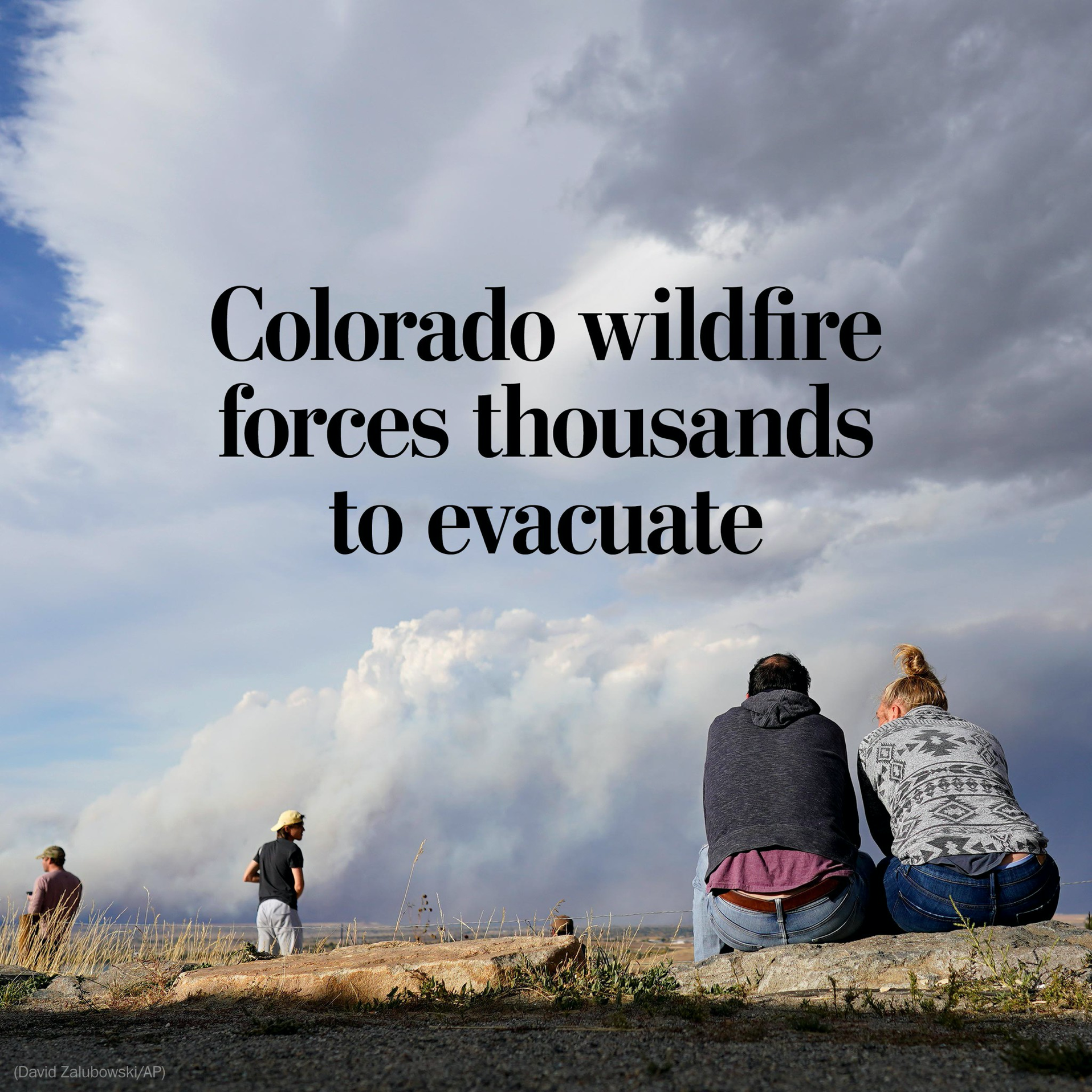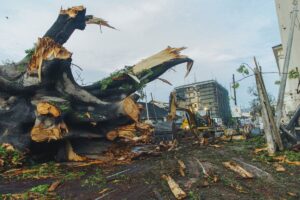A fast-moving, rapidly growing wildfire erupted Saturday and expanded to more than 8,788 acres by Sunday morning in northwest Boulder County, Colo., prompting the evacuation of at least 3,000 people and sending hikers and campers fleeing to safety. The fire is just 5 percent contained, and low clouds grounded firefighting aircraft this morning.
“There were a number of aircraft on order,” Boulder County Sheriff’s Office Division Chief Mike Wagner said in a news briefing. Wagner said the fire already ranks as the largest blaze in Boulder County history based on its acreage, and damage assessment teams have not yet been able to access all areas of the fire to determine how many homes and other structures have been lost.
On Sunday evening, the Sheriff’s Office released a list of damaged or destroyed structures, and it includes 26 homes destroyed. “We anticipate that more buildings will be added to this list as the team gains access to additional areas impacted by the fire,” the office stated on its website.
The conflagration grew rapidly Saturday in parched vegetation from an initial spark, exhibiting extreme fire behavior, including rotating columns of flames and smoke and an orange glow that was visible for miles as 60 mph winds blew the blaze southeast. The fire’s cause is under investigation.
The small community of Jamestown, about 15 miles northwest of Boulder, was evacuated Saturday, and the town of Lyons, home to more than 2,000, is under an evacuation warning on Sunday. According to the Boulder Office of Emergency Management, “An Evacuation Warning is when a public safety official issues a warning that there is a high possibility of an evacuation due to a wildfire that poses a risk to life or property.”
The ingredients for the CalWood Fire, which was first reported near the Cal-Wood Education Center in Jamestown, are all too familiar at this point in the West’s destructive wildfire season: unusually dry conditions, strong winds, low humidity and above-average temperatures.
In addition to the CalWood fire, another blaze named the LeftHand Canyon Fire also erupted in Boulder County Sunday, causing officials to evacuate the community of Ward. Satellite imagery indicated the fire was growing on Sunday afternoon.
The entire state of Colorado is in drought conditions, according to the latest update of the U.S. Drought Monitor, with nearly 60 percent of the state enduring an extreme drought or worse. This is the first time that the whole state has been affected by drought since 2013.
Human-caused climate change is sparking more frequent and intense wildfires in much of the West, along with an extension of the wildfire season, studies show.
The forecast for firefighters battling the blaze is mixed. A cold front passed through the region late Saturday, bringing a shallow layer of cold air with higher humidity. However, in the foothills of the Rockies, where the blaze is burning, conditions are drier and winds are forecast to remain gusty throughout the day Sunday and pick up in intensity Sunday night.
The most popular and interesting stories of the day to keep you in the know. In your inbox, every day.
Wind gusts to 60 mph are forecast for areas above 8,000 feet in the vicinity of the CalWood Fire, especially after midnight through sunrise, the National Weather Service forecast office in Boulder stated in an online technical forecast discussion.
“There is a chance the strong winds make [it] as low as 6,000 ft [in] elevation,” the Weather Service stated. Smoke from the fire is expected to foul air quality in Boulder and northern parts of Denver on Sunday.
The CalWood Fire is not the only major late-season blaze burning in Colorado. The Cameron Peak Fire is located to the north, just west of Fort Collins. At about 200,000 acres, it is by far the largest wildfire on record in Colorado.
In addition, the East Troublesome Fire is active near Grouse Mountain, to the west of Rocky Mountain National Park. Smoke from these fires can be seen on satellite imagery, drifting across the country.
These fires are not typical for Colorado during October
Normally in October, Colorado sees winter weather beginning in earnest, with mountain snows and changeable conditions, oscillating between springtime temperatures and winter, along the Rocky Mountain Foothills, including Boulder.
However, so far this year, precipitation has been far below average, and winter has not asserted itself.
According to the Colorado Climate Center, which is part of the Colorado State University atmospheric science department, from 1992 to 2015, it was unheard of for large wildfires of more than 11,000 acres to ignite in the Rocky Mountain state so late in the year.
The Colorado blazes also come amid the worst wildfire season on record in California, where well over 4.1 million acres have gone up in flames, destroying more than 9,000 structures and killing 31. The acreage burned this year is more than twice the area in the state’s previous record-worst fire season, in 2018. This year’s fires include that state’s largest, the August Complex, the state’s first “gigafire” on record, at more than 1 million acres in size.
Large fires also are burning in Utah and other parts of the West, stretching firefighting resources thin.




